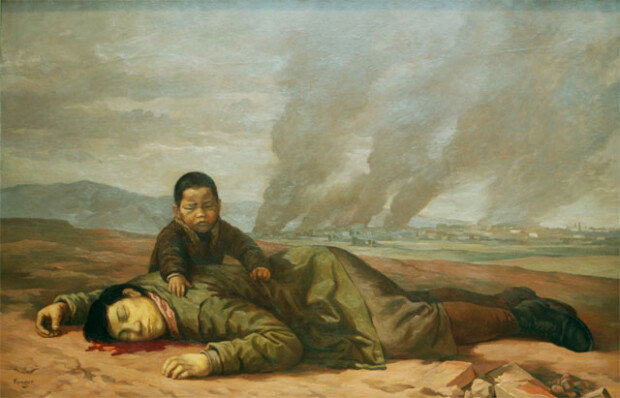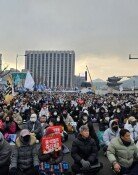The Korean War depicted by a Polish painter
The Korean War depicted by a Polish painter
Posted June. 20, 2019 07:50,
Updated June. 20, 2019 07:50

Rulers are the ones who make decisions on war, but the sacrifice is made by ordinary people. The Korean War, the first hot war in the cold war era, produced the most severe tragedy in the history of Korea. The impact was felt at foreign artists who had never even visited Korea.
In 1951, Pablo Picasso, who was based in Paris at that time, produced a painting titled “Massacre in Korea,” reporting to the world the tragedy of the war. In the same year, Polish painter Wojciech Fangor created a painting titled “Korean Mother” to share the tragedy of the war. It depicts a bleeding mother lying on the ground, while her young son, gripping his mother’s body, stares beyond the audience. The helpless young boy looks as if he has lost the world, lacking the energy to even ask for help. On the background, black smoke appears on top of the village that has been bombed. It is unknown whether the child has survived as a war orphan or killed like his mother while seeking refuge.
The artist did not explicitly show who the perpetrator is, but the audience can assume that the bombing of U.S. forces has killed the boy’s mother and the village, as the painting was created in Poland, a communist country which was under the influence of the Soviet Union at that time. The techniques used in the painting follow “Socialist Realism” from the Soviet Union. When this technique became an official art style in Poland in 1949, Fangor, who previously painted cubism style or Impressionist style paintings, had to adapt as well. The Korean War was the first theme he chose for his new style, also the first piece to convey political message.
When the painting was first exhibited in Warsaw, he was criticized for not revealing the perpetrator of the bombing. However, this painting later became the symbol of anti-war and peace, encompassing the ideologies of the right and left. The sorrowful gaze of the war orphan is more powerful than any other anti-war message. It stresses that war leads to the tragedy and sacrifice of the weak and innocent.
Headline News
- Joint investigation headquarters asks Yoon to appear at the investigation office
- KDIC colonel: Cable ties and hoods to control NEC staff were prepared
- Results of real estate development diverged by accessibility to Gangnam
- New budget proposal reflecting Trump’s demand rejected
- Son Heung-min scores winning corner kick







